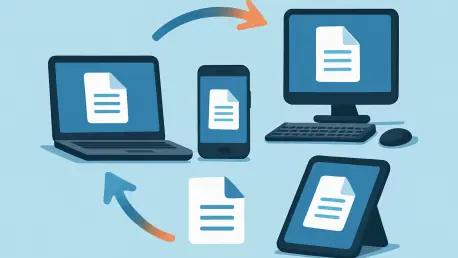I’m thrilled to sit down with Nia Christair, a true authority in the realm of mobile technology. With a robust background in mobile gaming, app development, device hardware design, and enterprise mobile solutions, Nia brings a wealth of insight into the latest developments in cross-platform innovations. Today, we’re diving into Google’s groundbreaking announcement of integrating Quick Share with Apple’s AirDrop, exploring what this means for users, security, and the broader mobile ecosystem. Our conversation will touch on the technical intricacies of this file-sharing feature, its impact on everyday users and businesses, and the potential implications for industry dynamics and regulatory landscapes.
Can you walk us through Google’s recent announcement about integrating Quick Share with Apple’s AirDrop and what it means for file sharing between Android and iOS devices?
Absolutely. Google has made a significant move by enabling Quick Share, their file-sharing tool on Android, to work seamlessly with Apple’s AirDrop. This means users can now transfer files directly between devices like the Pixel 10 and iPhones or other Apple products. It’s a big step toward breaking down the barriers between these two major platforms, which have historically kept file sharing siloed. However, there are some limitations, particularly on the Apple side, where users must set AirDrop to “Everyone” mode to receive files from Android devices, and they can still decline incoming transfers.
How does Google ensure that this cross-platform file sharing remains secure for users on both Android and iOS?
Google has emphasized a multi-layered security approach to protect data during these transfers. They’ve utilized Rust, a memory-safe programming language, for the communication channel, which helps prevent common vulnerabilities. On top of that, they’re leveraging the inherent platform protections built into both Android and iOS. Google also conducted a rigorous security review of the feature to ensure end-to-end safety. These layers work together to create a secure connection, aiming to safeguard user data no matter which platform they’re using.
What do users need to do to start using this feature on their devices, especially across the different platforms?
For Apple users, it’s pretty straightforward but requires a specific setting adjustment. They need to set AirDrop to “Everyone” mode in their sharing settings to allow incoming files from Android devices. On the Android side, particularly for Pixel 10 users, they need to update the Quick Share Extension, which can be found in the Privacy and Security section of their device settings. It’s a bit of a manual process right now, but it ensures the feature is ready to go once configured.
In your opinion, how could this integration change the day-to-day experience for users who rely on both Android and iOS devices?
I think this could be a game-changer for a lot of people. File sharing has always been a pain point when you’re dealing with different platforms, often requiring third-party apps or cumbersome workarounds. This integration simplifies that, making it easier for friends, family, or colleagues to share photos, documents, or other files instantly, regardless of their device. That said, potential downsides could include privacy concerns or accidental sharing if settings aren’t managed carefully, especially with AirDrop set to “Everyone.”
What are some of the implications of this feature for businesses and IT managers who oversee device usage in professional settings?
For businesses, this feature is a double-edged sword. On one hand, it facilitates easier collaboration across teams using mixed devices. On the other, IT managers are likely to be wary of data security risks. File sharing can be a vector for data leaks or unauthorized transfers, so there’s a real concern about sensitive information leaving the organization. Thankfully, on Apple devices, IT can already disable AirDrop through device management tools, and I expect similar controls will emerge for Quick Share on Android to help mitigate these risks.
How do you think Apple might respond to Google’s initiative to integrate with AirDrop, given their focus on ecosystem control?
That’s a tough one. Apple might view this as an intrusion into their tightly controlled ecosystem, especially since they’ve historically been protective of features like AirDrop. They could potentially restrict or block this integration to maintain security and privacy standards, or because they see it as undermining their walled garden. On the flip side, they might recognize the user benefit and embrace it as a way to show openness, especially under regulatory scrutiny. It really depends on how they weigh user experience against control.
With Apple facing regulatory challenges, particularly in Europe, how could this feature play into the broader conversation around cross-platform collaboration?
This integration could be a strong example for Apple to point to when addressing regulatory pressures. In Europe, where interoperability and competition are hot topics, a feature like this shows that cross-platform collaboration is possible without necessarily sacrificing security or user experience. If Google and Apple can work together to refine this, it might serve as a model for how to balance openness with the unique aspects of each operating system, potentially easing some of the criticism Apple faces.
What is your forecast for the future of cross-platform features like this in the mobile tech landscape?
I’m optimistic that we’ll see more of these kinds of integrations as user demand for seamless experiences grows and regulatory pressures push companies to play nicer with each other. File sharing is just the tip of the iceberg—think messaging, app compatibility, or even shared hardware features. The challenge will be maintaining security and privacy while opening up these ecosystems. If Google and Apple can nail this with Quick Share and AirDrop, it could set a precedent for broader collaboration, ultimately benefiting users across the board.









